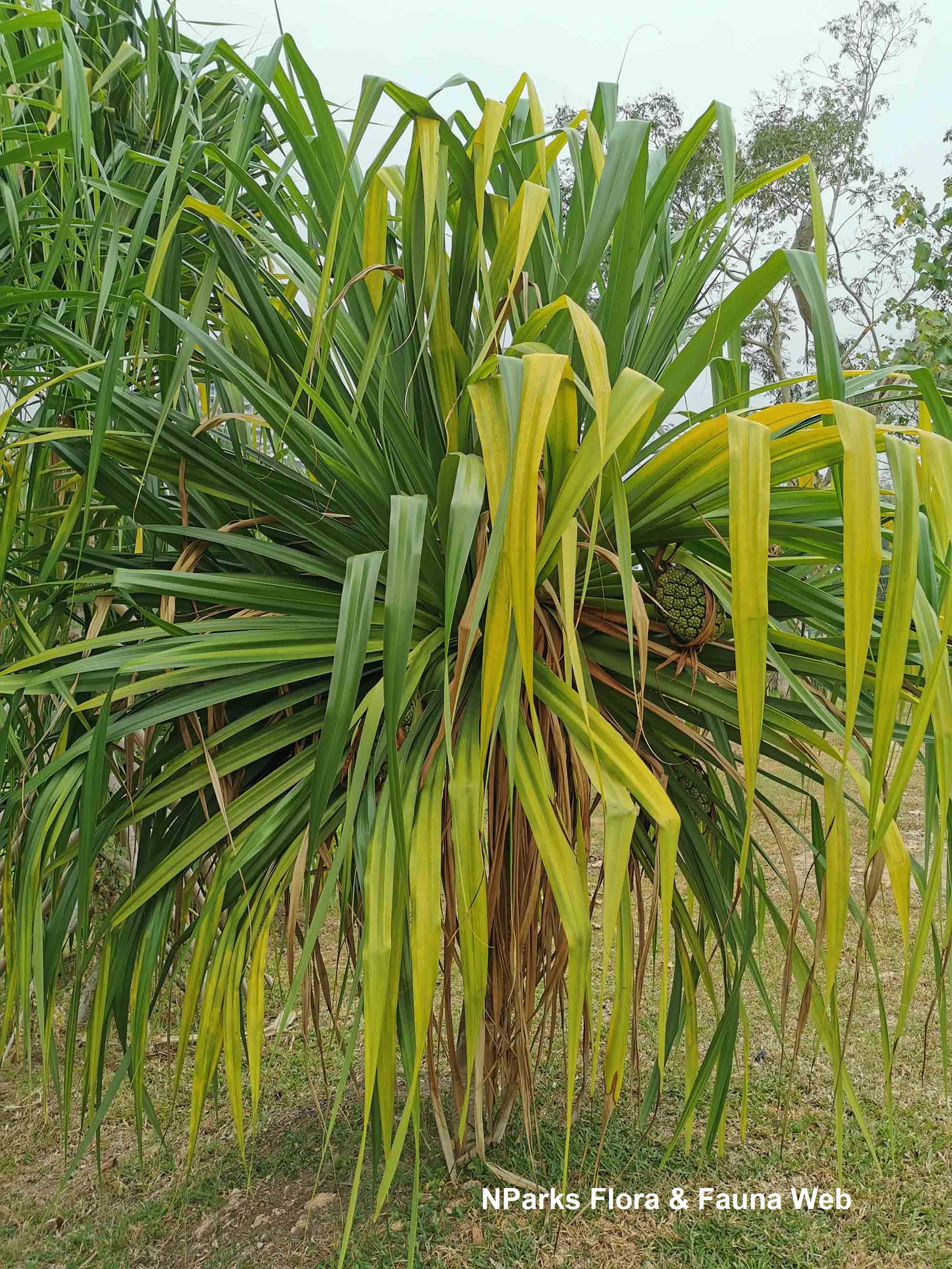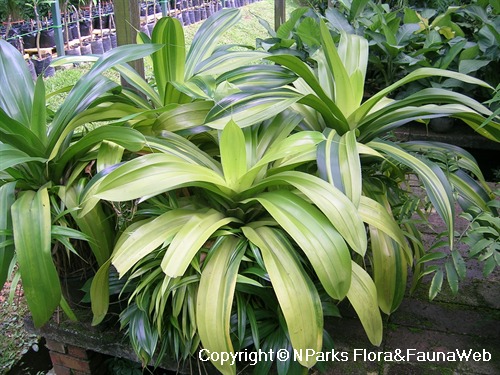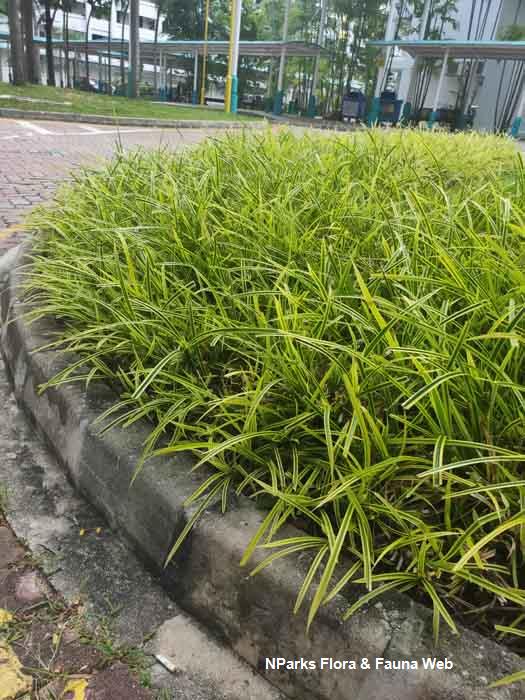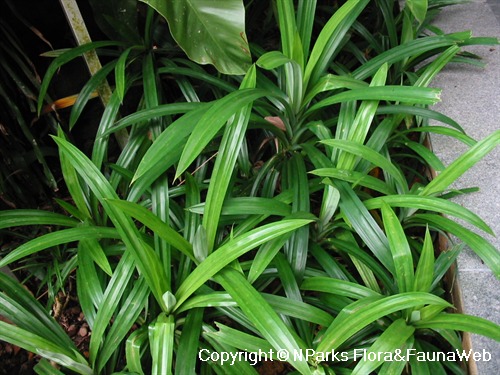
Back
Pandanus amaryllifolius Roxb.
| Family Name: | Pandanaceae |
| Synonyms: | Pandanus hasskarlii, Pandanus latifolius, Pandanus latifolius var. minor, Pandanus odorus |
| Common Name: | Pandan, Fragrant Pandan, Scented Pandan, Screwpine, Fragrant Screwpine, Indonesian Screwpine, Pandan Rampeh, Pandan Wangi, Daun Pandan, 班兰 |
Name
Classifications and Characteristics
| Plant Division | Angiosperms (Flowering Seed Plants) (Monocotyledon) |
|---|---|
| Plant Growth Form | Tree (Shrubby (1m-5m)), Herbaceous Plant |
| Lifespan (in Singapore) | Perennial |
| Mode of Nutrition | Autotrophic |
| Maximum Height | 1 m to 4.5 m |
Biogeography
| Native Distribution | S.E.A. |
|---|---|
| Preferred Climate Zone | Tropical |
Description and Ethnobotany
| Growth Form | Shrub (1 - 1.6 m tall) or small tree (2 - 4.5 m tall) depending on culture. Continual harvesting of the leaves from the shrub form will prevent it from developing into the tree form. |
|---|---|
| Trunk | The tree form of this species has an erect trunk with little to no branching (15 cm wide). The trunk produces thick aerial roots. |
| Foliage | Shrub leaves are linear with an entire leaf margin and acute apex (2 - 5 cm wide, 25 - 75 cm long). Leaves of the tree form are the same shape, but about twice the size (7 - 9 cm wide, 150 - 220 cm long). Leaves have a slightly pleated surface; a cross-section of the leaf is shaped like the letter "W" turned upside down. Leaves are spirally arranged. |
| Flowers | The female inflorescence has not been observed, while the male inflorescence is very rare and only found on the tree form of this species. The male inflorescence is a spike of flowers with a white spathe. |
| Fruit | This species has not been observed to produce fruits due to the lack of female inflorescences. |
| Cultivation | This species is easy-to-grow. It grows best on slopes with moist soil. To maintain the plant as a shrub, regularly harvest the leaves and water generously. This species is susceptible to the Pandanus mealybug (Laminococcus pandani). |
| Etymology | The genus name "Pandanus" is derived from a Malayan name, screw-pines. The species epithet "amaryllifolius" refers to how its leaves are similar to those of plants in the Amaryllis genus. It is derived from the Latin words "amaryllis" and "folius" meaning leaves. |
| Ethnobotanical Uses | Food (Herb or Spice): Juice extracted from leaves is used to add fragrance to various types of teas and desserts. Desserts include cakes and kueh. The leaves are not consumed, but are removed from the dish before serving. The chlorophyll pigments in the leaves will colour foods green. In Indonesia, rice is sometimes steamed in baskets made of the leaves. Thai people wrap the leaves around pieces of seasoned chicken and then fry them. In Southeast Asia, the leaves are often used to make small boxes or containers that can hold pudding or jellies. Medicinal: Leaf infusions prepared in coconut oil is rubbed on the body to treat rheumatism. Other type of leaf infusions are thought to have a calming effect on restless individuals. The roots have a compound called 4-hydroxybenzoic acid which has potential as a treatment for diabetes. Cut - Dried Flower: The leaves are sometimes weaved together to make baskets or used in potpourri. Others: Chemicals in the leaves, such as 2-acetyl-1-pyrroline is repellant to American and German cockroaches (Periplaneta americana and Blattella germanica, respectively). |
Landscaping Features
| Landscaping | This species is often planted in home gardens in Southeast Asia as food colouring and flavouring. It is also grown for decorative purposes. |
|---|---|
| Desirable Plant Features | Ornamental Foliage, Fragrant (Foliage) |
| Landscape Uses | General, Container Planting, Small Gardens |
| Thematic Landscaping | Economic Garden |
Fauna, Pollination and Dispersal
| Fauna Pollination Dispersal Associated Fauna | Butterfly Host Plant (Leaves) |
|---|
Plant Care and Propagation
| Light Preference | Semi-Shade, Full Sun |
|---|---|
| Water Preference | Moderate Water, Lots of Water |
| Plant Growth Rate | Moderate |
| Rootzone Tolerance | Fertile Loamy Soils, Well-Drained Soils, Easy to Grow |
| Maintenance Requirements | Low |
| Diseases | Pandanus mealybug (Laminococcus pandani) |
| Pest(s) | Chewing Insects |
| Propagation Method | Stem Cutting, Sucker |
Foliar
| Foliage Retention | Evergreen |
|---|---|
| Mature Foliage Colour(s) | Green |
| Mature Foliage Texture(s) | Smooth, Glossy / Shiny |
| Prominent Young Flush Colour(s) | Green - Light Green |
| Young Flush Texture(s) | Smooth |
| Foliar Type | Simple / Unifoliate |
| Foliar Arrangement Along Stem | Spiral |
| Foliar Attachment to Stem | Sessile |
| Foliar Shape(s) | Non-Palm Foliage (Linear) |
| Foliar Venation | Parallel |
| Foliar Margin | Entire |
| Foliar Apex - Tip | Acute |
| Foliar Base | Truncate / Square |
| Typical Foliar Area | Mesophyll ( 45cm2 - 182.25 cm2 ) |
| Leaf Area Index (LAI) for Green Plot Ratio | 3.5 (Shrub & Groundcover - Monocot) |
Non - Foliar and Storage
| Trunk Type (Non Palm) | Woody |
|---|---|
| Stem Type & Modification | Herbaceous |
| Root Type | Underground (Fibrous Root) |
Floral (Angiosperm)
| Flower & Plant Sexuality | Unisexual Flowers , Dioecious |
| Flower Colour(s) | White |
|---|
| Flower Symmetry | Bilateral |
| Inflorescence Type | Spike |
| Flowering Period | Rarely |
Image Repository
Others
| Master ID | 1005 |
|---|---|
| Species ID | 2299 |
| Flora Disclaimer | The information in this website has been compiled from reliable sources, such as reference works on medicinal plants. It is not a substitute for medical advice or treatment and NParks does not purport to provide any medical advice. Readers should always consult his/her physician before using or consuming a plant for medicinal purposes. |

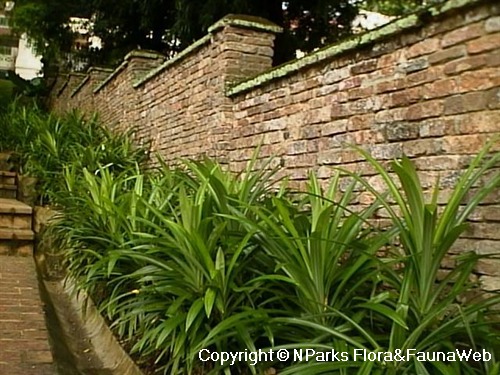
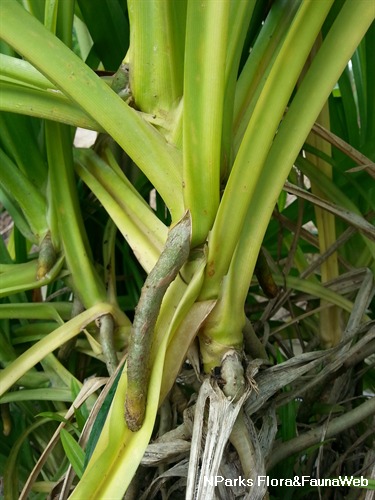
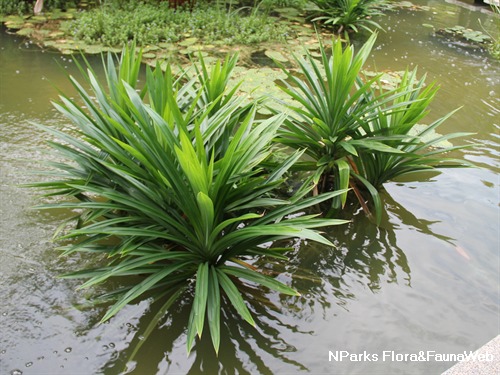
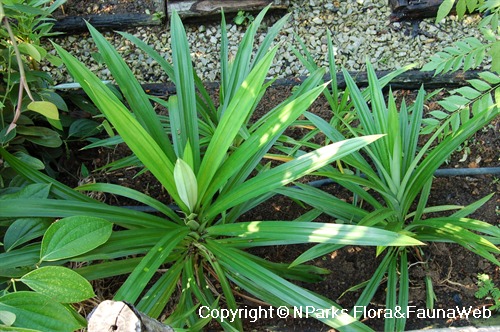
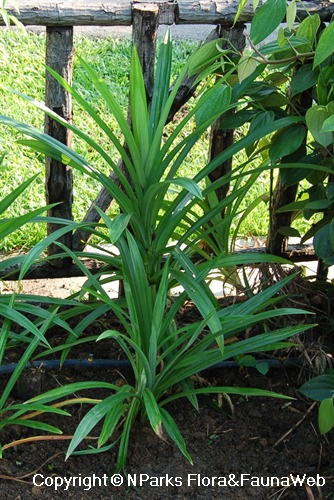
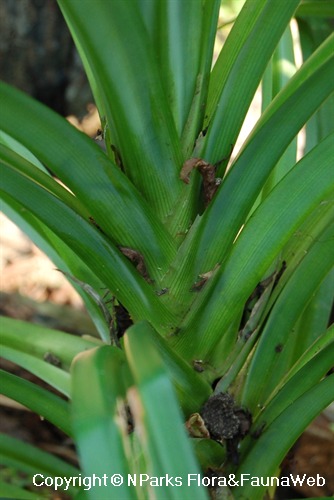
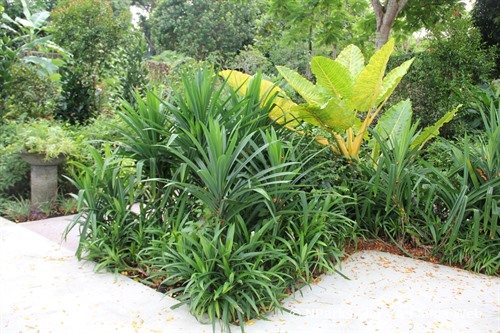
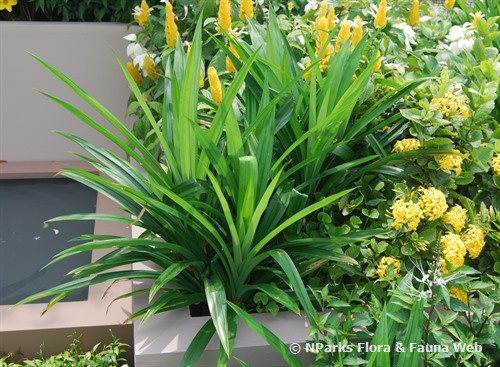
.jpg)
